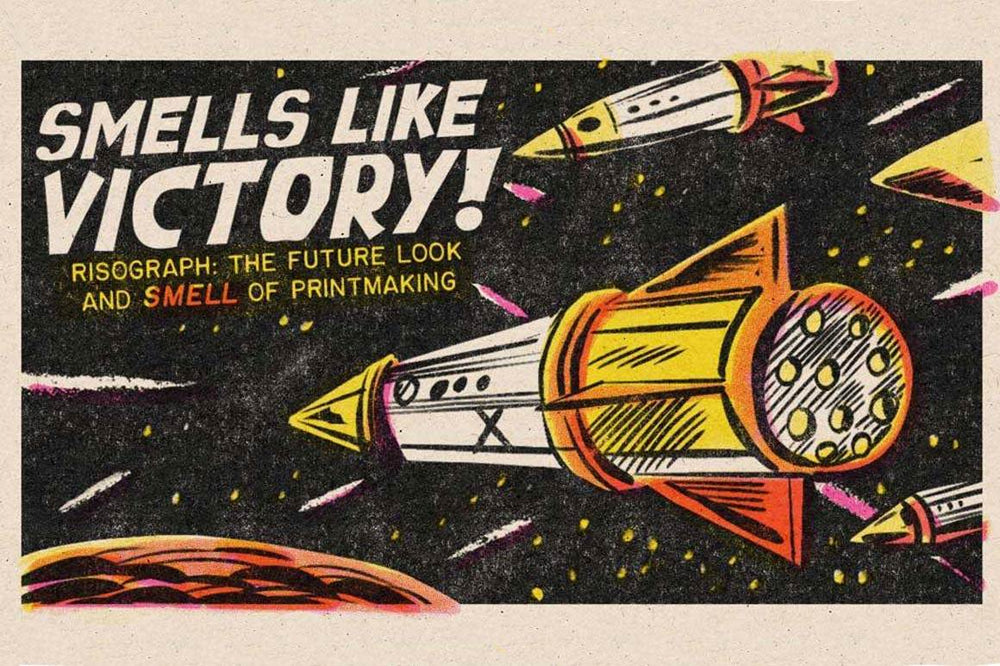Risograph: The Future Look AND Smell of Printmaking
The smell of change is in the air. A global printing revolution is taking place. A device called the Risograph, a printer that makes unique and inexpensive multiples, has invaded the practices of artists of all ages. Risograph print shops have sprung up wherever there’s a critical mass of contemporary artists, comic artists and printmakers.
What's a Risograph?
Imagine if a Xerox machine and an offset press had an ugly baby. To look at a Risograph printing machine, one doesn’t see much — has a familiar and fairly bland form factor, similar to that of your office photocopier.
However, if you look at the prints being produced, it’s another thing entirely. The inks in Risograph prints are layered, gorgeous and highly distinct -- and even have a unique smell. Risography has even spread to universities, where only the most out of touch programs have no Risograph facilities or classes.


